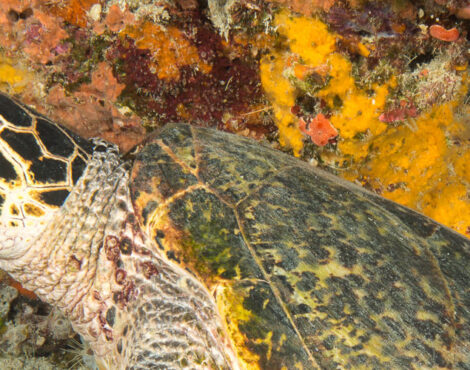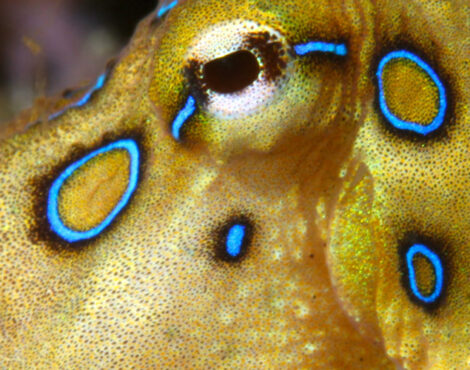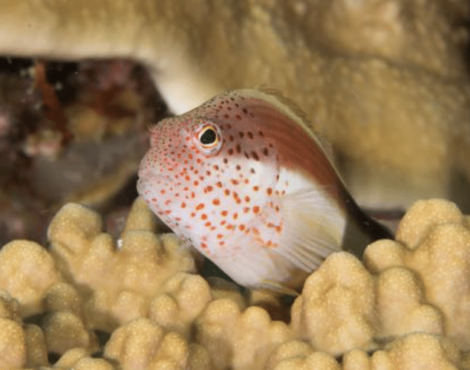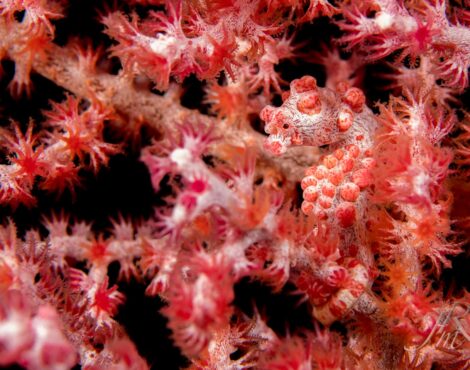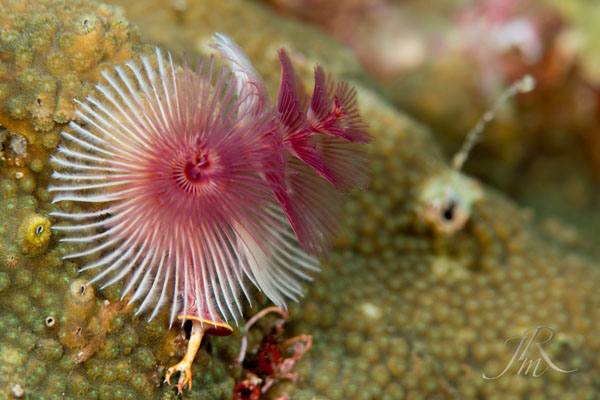
Once again, the festive season is upon us â and even the ocean appears to be getting into the Christmas spirit.
Poking out of almost every âmassive coralâ you encounter in Bunaken Marine Park are colourful little Christmas trees, however
these were not placed here for December.
These colourful miniature Christmas trees are actually worms, and are aptly named âChristmas tree wormsâ.
What are Christmas Tree Worms?
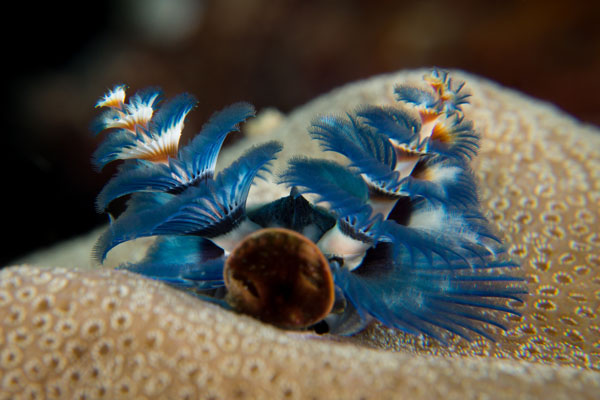
Scientifically known as Spirobranchus giganteus, Christmas tree worms are tube building polychaete worms that are part of the larger family, Sepulidae (tube building worms)
What does a Christmas Tree Worm look like?
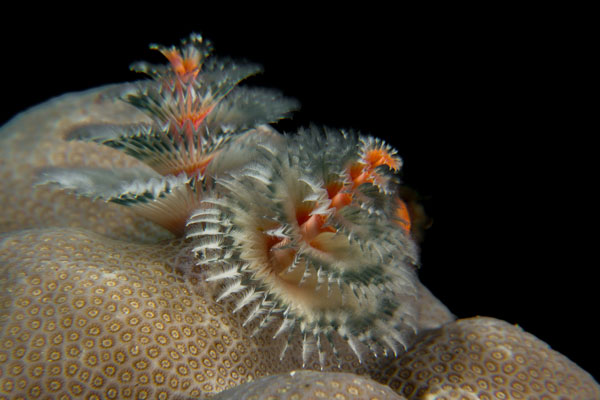
As its common name implies, Christmas tree worms look quite similar to Christmas trees â or more accurately, they look like a pair of Christmas trees, because each worm has two tree shaped spiral appendages.
With an average span and length of four centimetres, Christmas tree worms are fairly small, but very easy to spot due to their brightly coloured spirals. They come in blue, yellow, orange, white, red, or a combination of the above, and they stick out like a sore thumb against the often dull coloured massive corals they grow from.
The pair of colourful spirals we see growing from the coral are actually feeding plumes (or tentacles), and the majority of the worm is hidden â burrowed and anchored inside the coral it inhabits.
What do Christmas Tree Worms eat?
As Christmas tree worms canât really move, they must wait for their food to come to them. Their colourful tree shaped spirals have two main purposes â for respiration, and for filter feeding.
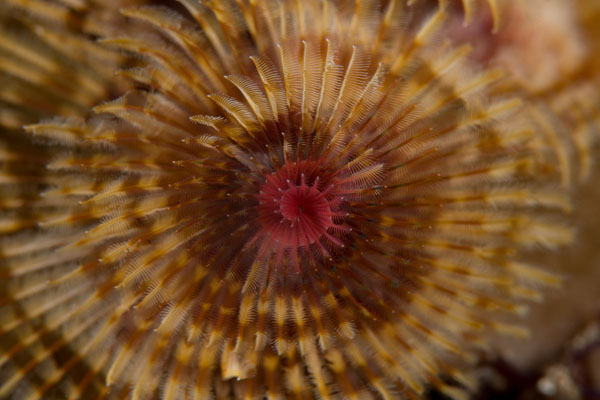
Each spiral plume is covered in hair like appendages called radioles, which circle outwards from the central spiral, and are used to catch phytoplankton that is suspended in the water. Once the phytoplankton is caught, it will be passed down the spiral towards the main body of the worm.
Phytoplankton that is too large will be discarded as the worm cannot eat it, and sand grains will be passed to storage sacs that can later be used for tube building.
Christmas Tree Worm Reproduction
Although it might be hard to tell by just looking at them, there are actually male and female Christmas tree worms.
They reproduce by sending their eggs and sperm into the water column, where hopefully they will meet and the egg will become fertilised. Fertilised eggs will develop into larvae that live in the open waters for nine to 12 days before settling onto coral.
Once settled, the worm will produce a mucus tube for protection, and someday that mucus tube will develop into a calcareous tube. Now the Christmas tree worm will remain in place for the rest of its life âthought to be over 40 years.
Where can I see Christmas tree worms?
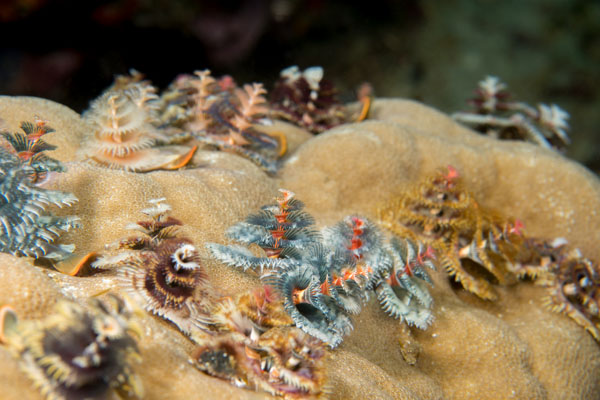
Luckily, everyone can see Christmas tree worms on their next visit to Bunaken Marine Park, and that is a guarantee!
Every single dive site around Bunaken has Christmas tree worms, and they can be found from the very shallow intertidal zone, to far deeper than we can dive.
Perhaps the easiest and quickest way to see them is to simply walk off the beach with a mask and snorkel. Their preferred corals can grow in as little as one metre of water at low tide, so the seagrass meadow in front of Siladen Resort is the perfect place to find them.
Photographing Christmas Tree Worms.
While finding Christmas Tree worms is not really a challenge, photographing them can be.
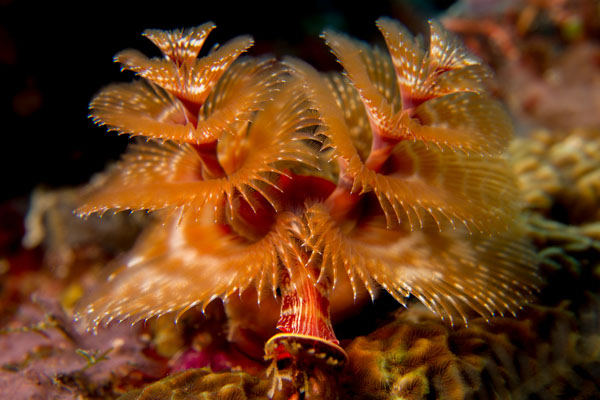
As the colourful plumes function for both feeding and breathing (Spirobranchus literally means spiral gills), Christmas tree worms are rightfully highly protective of them, and will retract them at the smallest threat of danger.
The radioles can detect even the slightest movement in the water, and can fully retract into their calcareous tube in the blink of an eye, and they wont begin to reappear for at least a minute. Luckily there is not a shortage of them, so if you miss out, you can just move onto the next.
Due to their size and intricate detail, many divers prefer to use macro lenses to photograph them, however sneaking up on them is often too tricky for all but the most relaxed and motionless divers. Wide angle lenses may not capture the fine details, however as Christmas tree worms tend to be found in groups, a wider lens can be used to capture multiple individuals in a range of colours.


